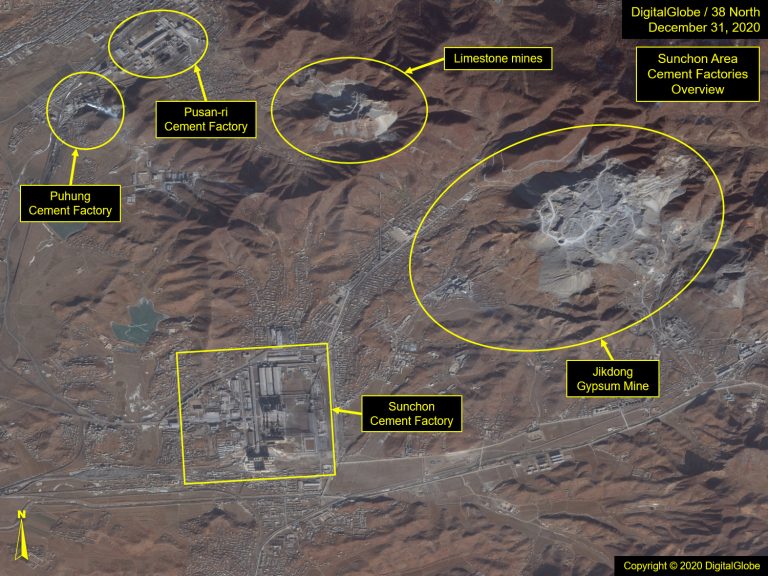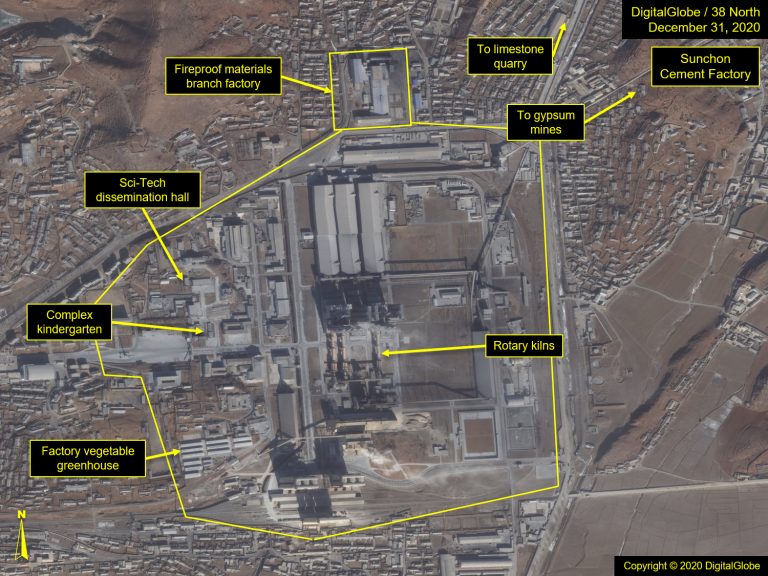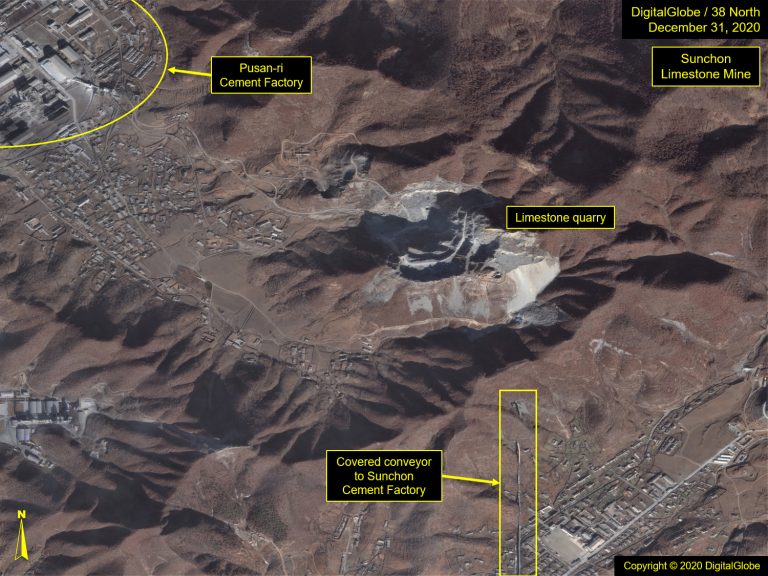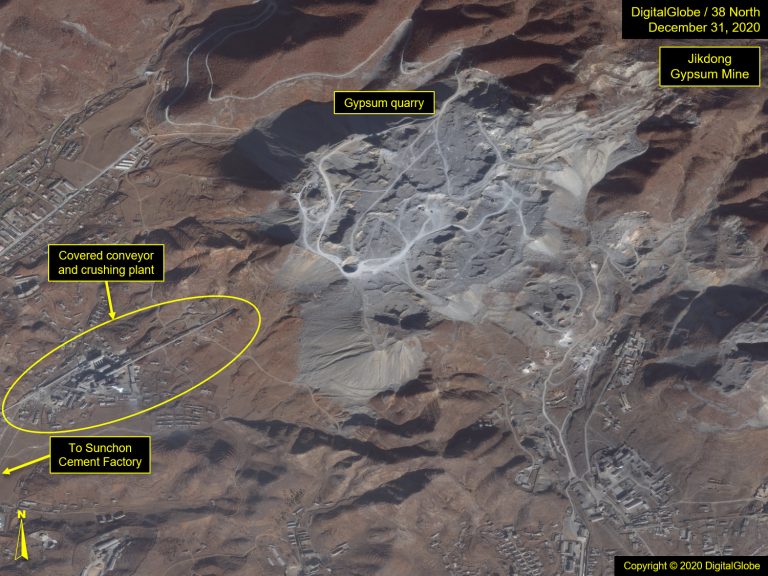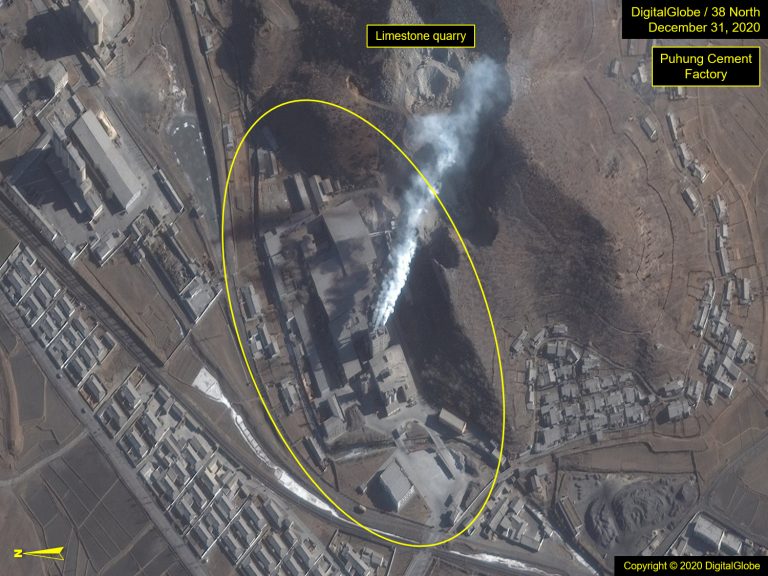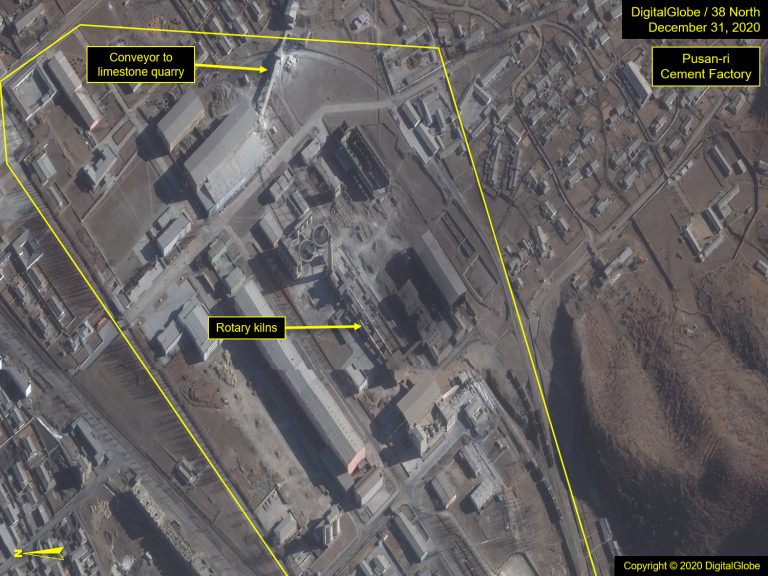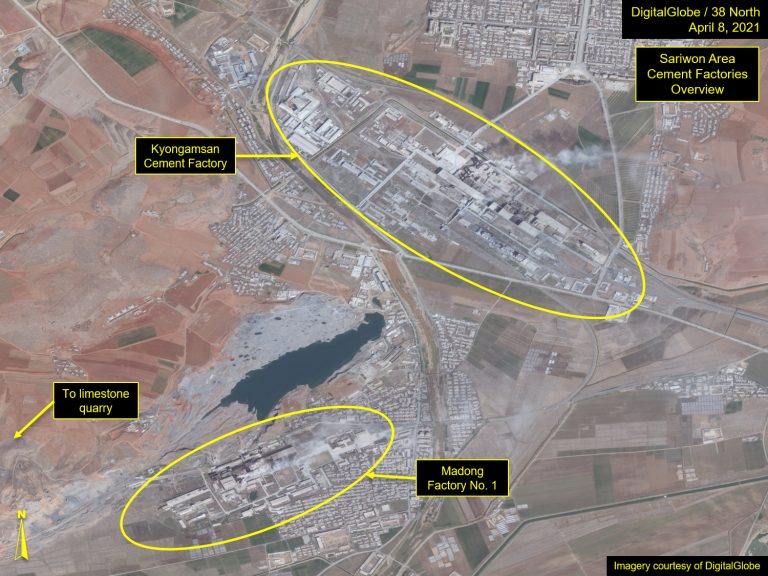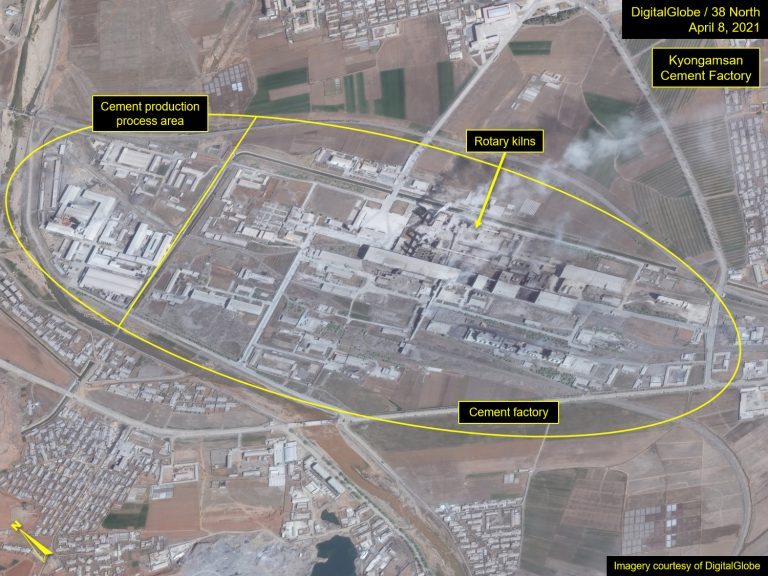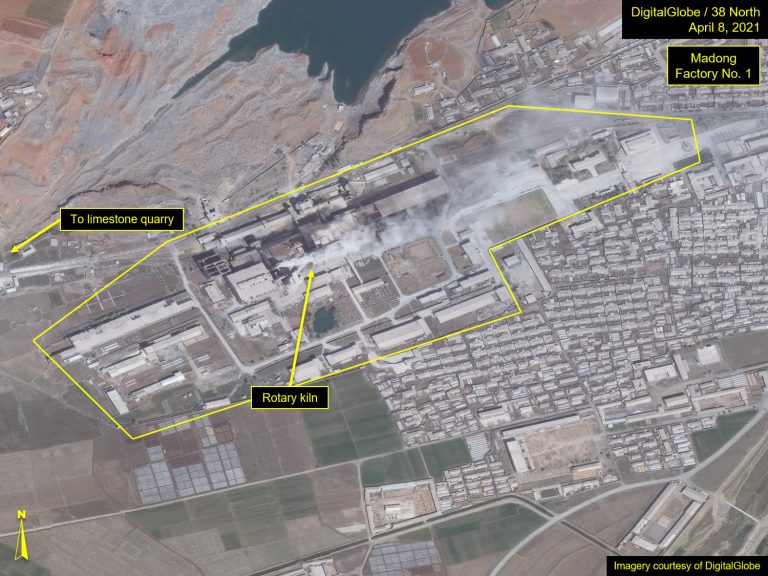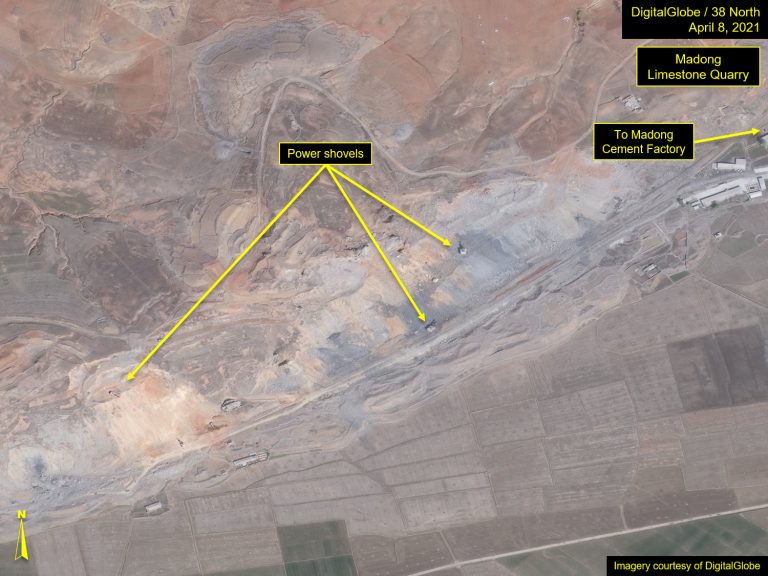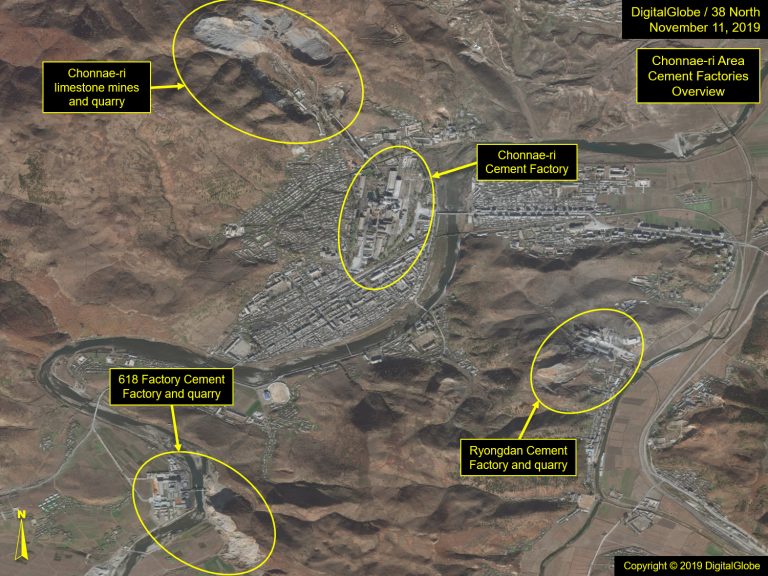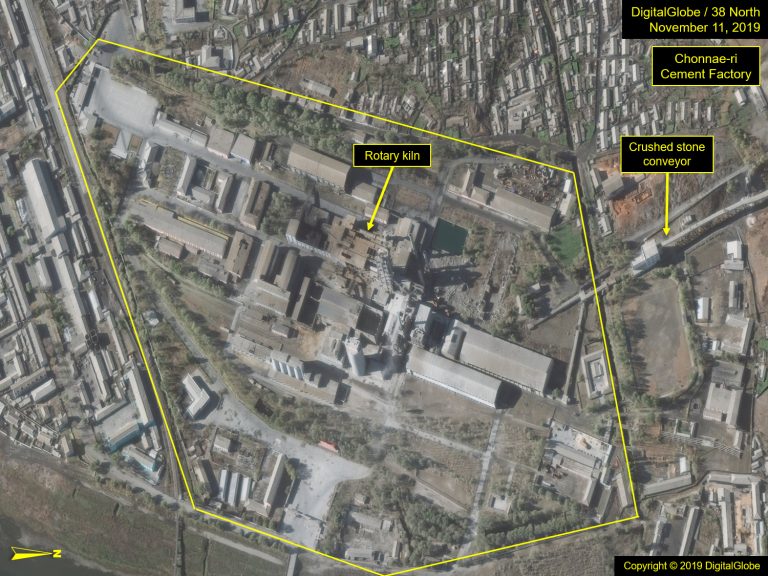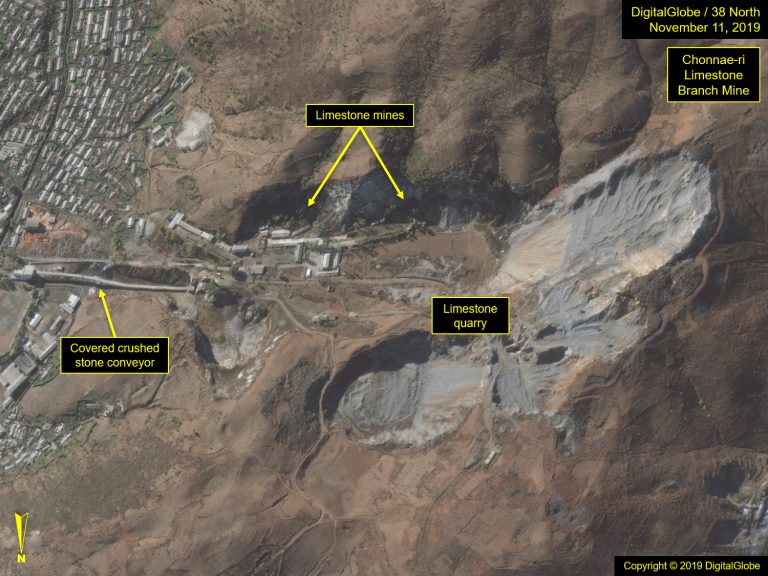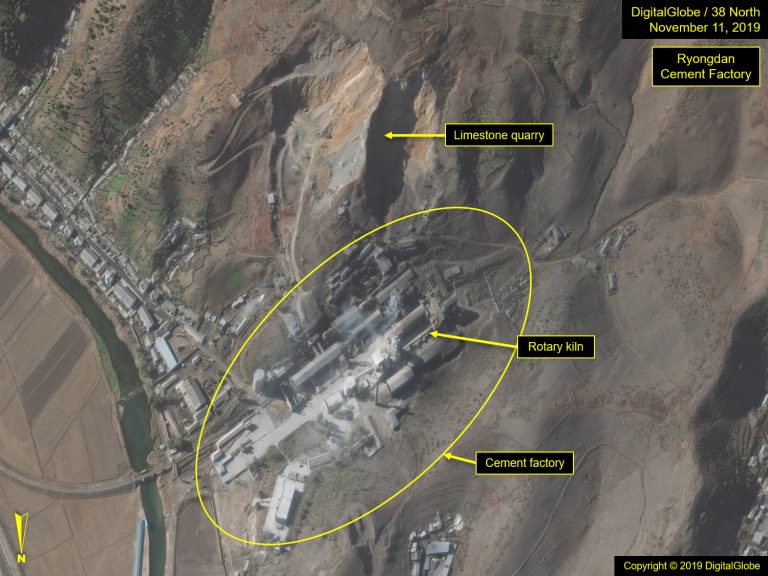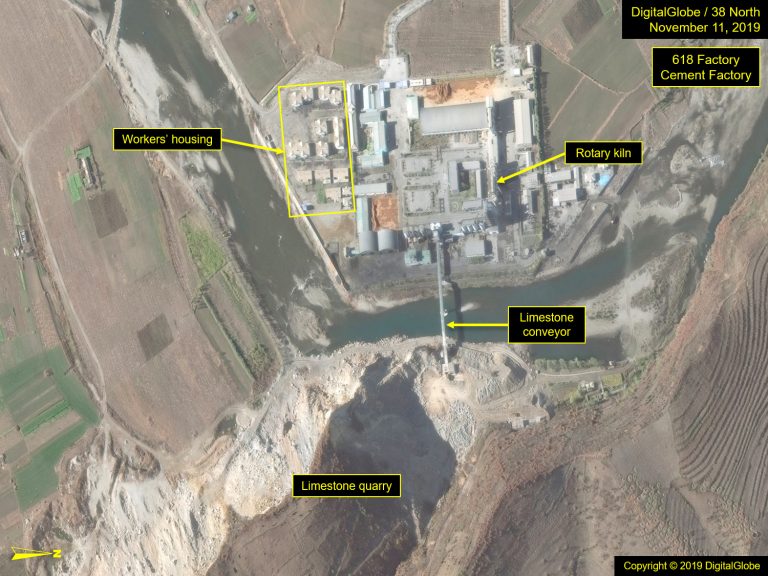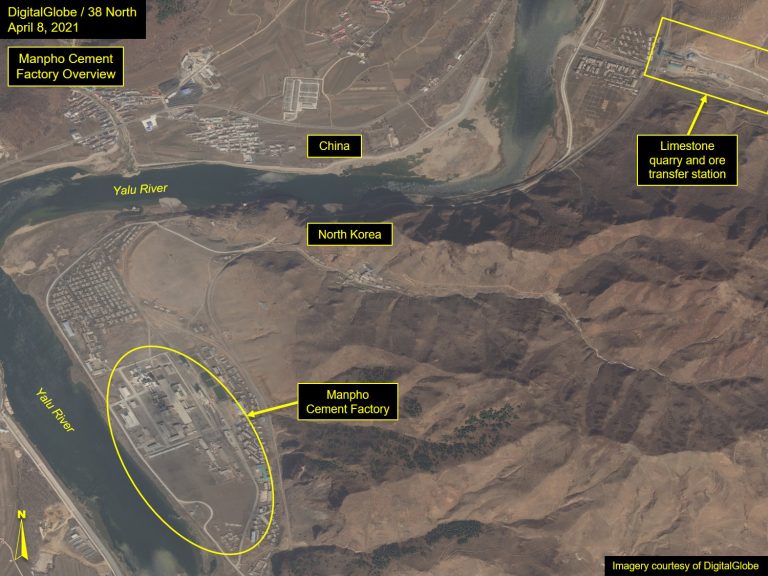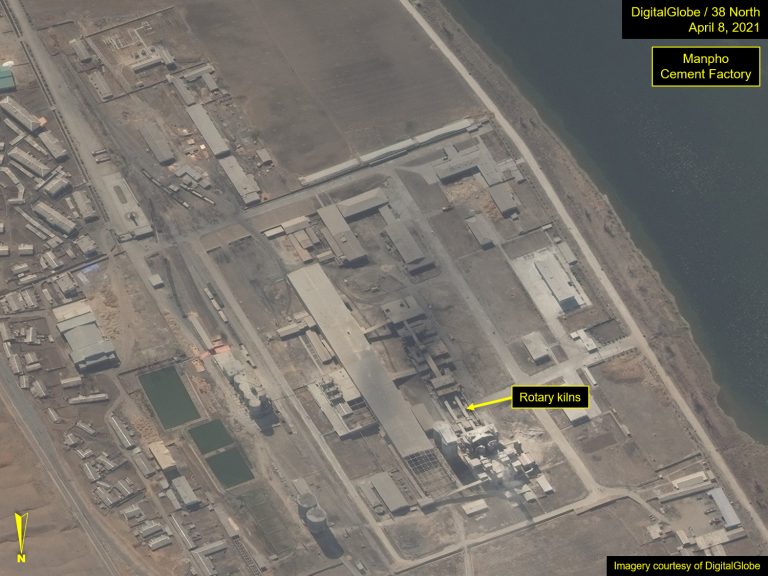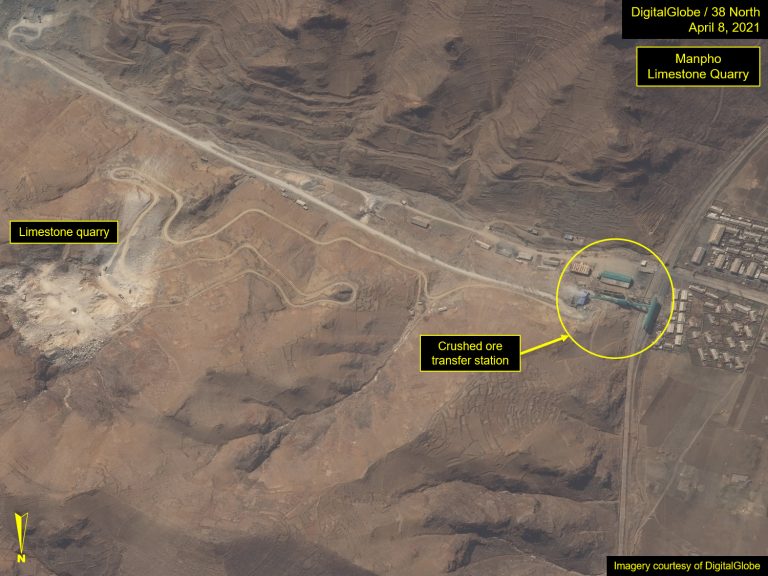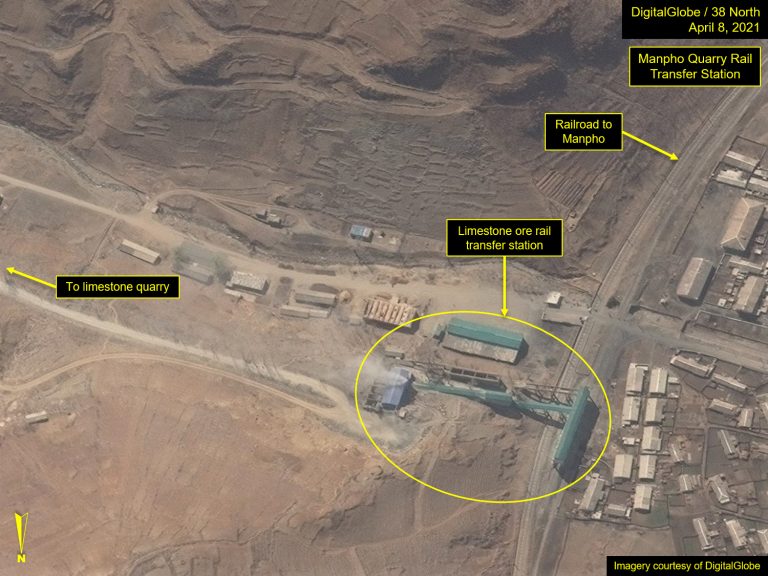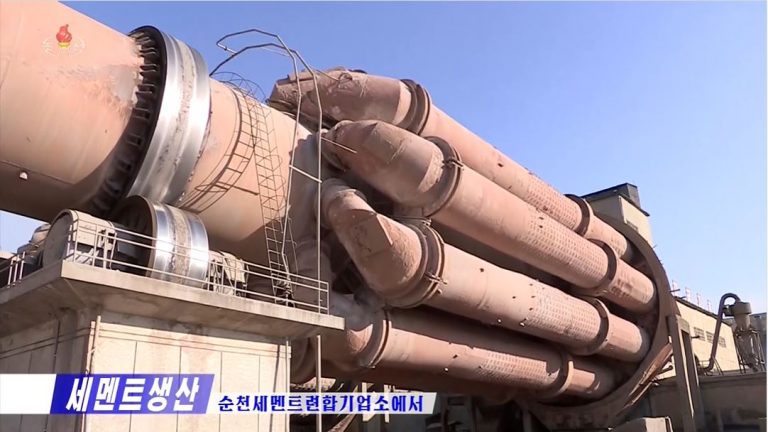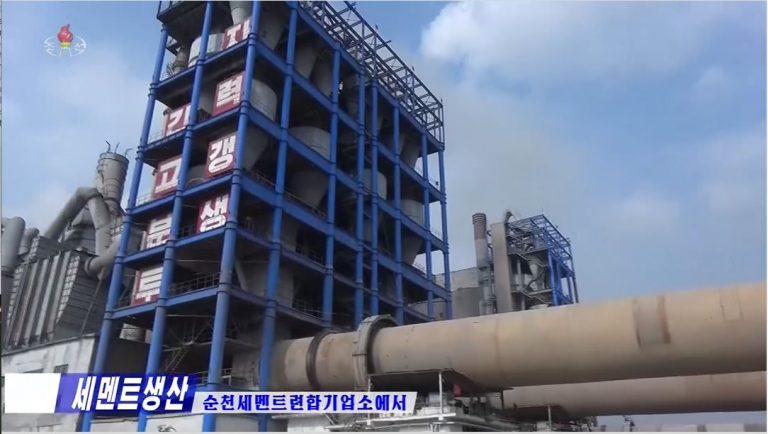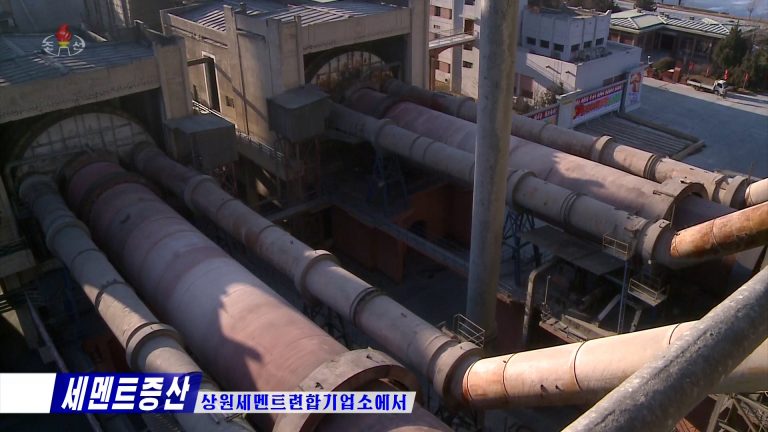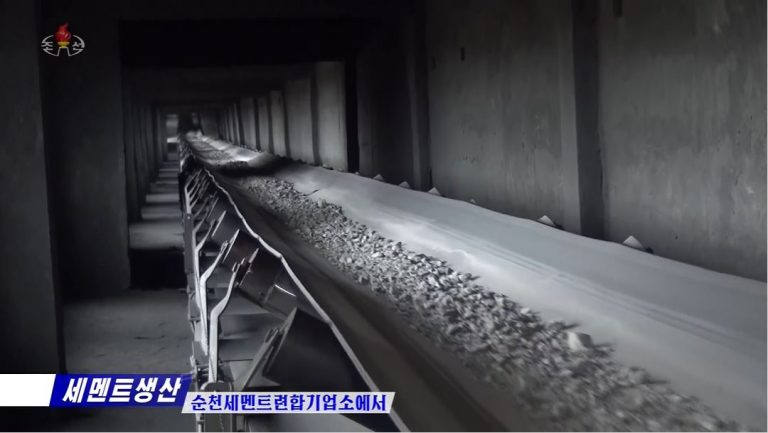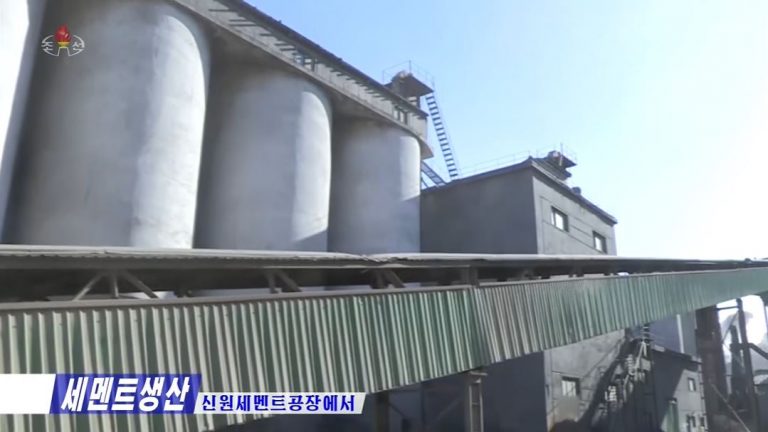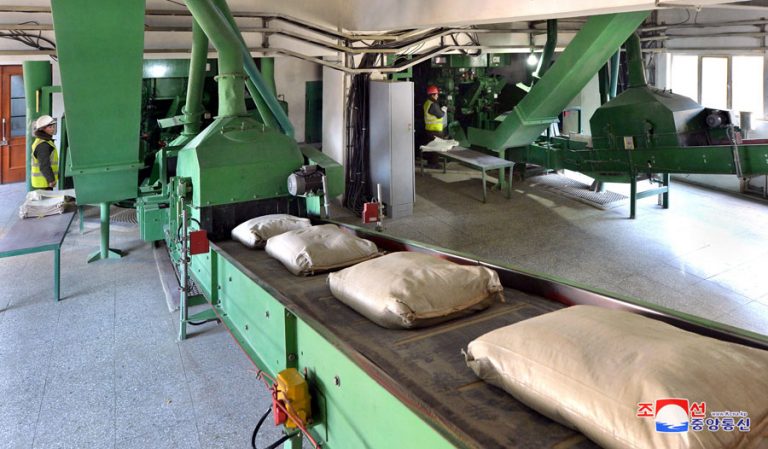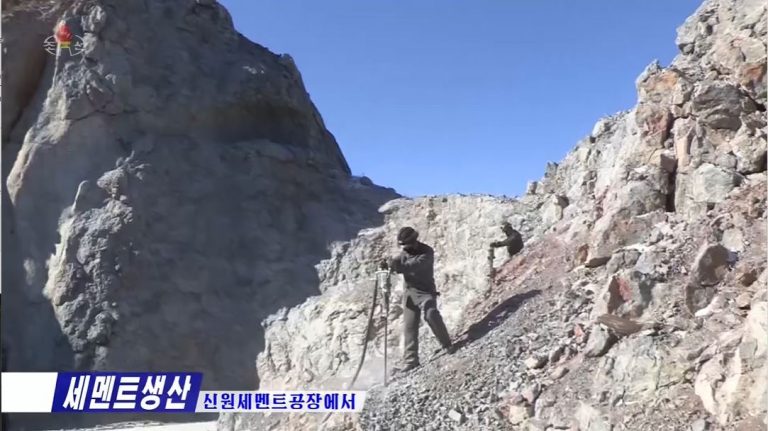North Korea’s Cement Industry: More Than Meets the Eye
Background
For decades, cement has been the preferred building material in North Korea. Limestone, a key ingredient in making cement, is in great abundance, as is high-quality river sand, an aggregate for making concrete. Assessing the cement industry through satellite imagery, however, is a difficult task.
Cement factories are typically located near the limestone mines they are dependent upon for source minerals and near railroads or major highways to facilitate transport to concrete plants located near the towns or major projects they serve. The larger factories also tend to be located near large metropolitan areas where the need for cement is greatest, but the limestone quarries also dictate their locations. Smaller cement factories tend to be located in more remote regions, servicing smaller projects and less accessible towns where transportation infrastructure is not as robust.
While cement factories tend to have some unique signatures that can be observed on imagery, infrequent collection of many of these factories hinders the ability to closely and credibly monitor traffic and activity levels. Moreover, interior changes to factory buildings, where production processes may be modernized, are hidden from view. Despite these constraints, establishing some baselines about the status of the industry is still possible.
Political Imperative for Revitalizing the Industry
During the Eighth Congress of the Workers’ Party of Korea (WPK) held this past January, Kim Jong Un laid out a five-year economic plan, including new tasks and targets for the construction field. He explained that the construction field “should powerfully push forward the two fronts simultaneously–industrial construction for strengthening the economic foundations of the country and construction for meeting the material and cultural needs of the people.”[1]
As a part of this new plan, the cement industry was specifically tasked with producing 8 million tons of cement and to “ensure self-sufficiency of the finishing materials.” Kim also called for the renovation of existing cement factories and the building of new “large-capacity, up-to-date cement factories in the areas with favorable conditions for materials and electricity supply and transport, and thus further expand the cement production capacity of the country.”[2]
While only a few months have passed since the new plan was announced, a plethora of national news articles has been published that tout stepped-up production efforts and the application of new technologies.[3] So far, however, commercial satellite imagery has revealed very little that substantiates these claims, albeit with several limitations to what can be gleaned from imagery alone.
Factory Signatures
North Korean cement factories vary in size and layout, and thus they can be difficult to distinguish from other factories that also deal with mineral ores, as they often share similar design components. Therefore, it is important to know what components contribute to the making of cement, and of those, which provide unique visual signatures that when viewed in sum, can reveal the factory’s purpose.
While there are a number of factory components for the making of cement, six tend to stand out.
- A nearby limestone quarry, where the rock is mined and crushed for transport.
- Covered conveyors used to transport the crushed rock from quarry to factory.
- A secondary crushing and grinding facility located within the factory complex. This building tends to abut or incorporate blending or homogenizing facilities, also referred to as proportioning facilities, where the ground limestone is typically mixed with clay, creating the meal.
- Tall, preheating towers, where the raw meal is then moved through a long, inclined tube-like, rotary kiln, where the meal is turned into clinker. Of all the visual signatures of a cement factory, this is the most unique and likely to reveal the plant’s function.
- A large building or set of buildings, where the clinker is cooled and mixed with other products, foremost being gypsum, which is used to determine the setting time for the cement. It is there, where the mixture is then ground into its final powder form–Portland cement.
- A storage and shipping area, which typically includes packaging and storage buildings and storage silos for bulk cement. It is there where the product is loaded onto trucks or railcars for transport.
Figure 1. Illustration of the cement process.
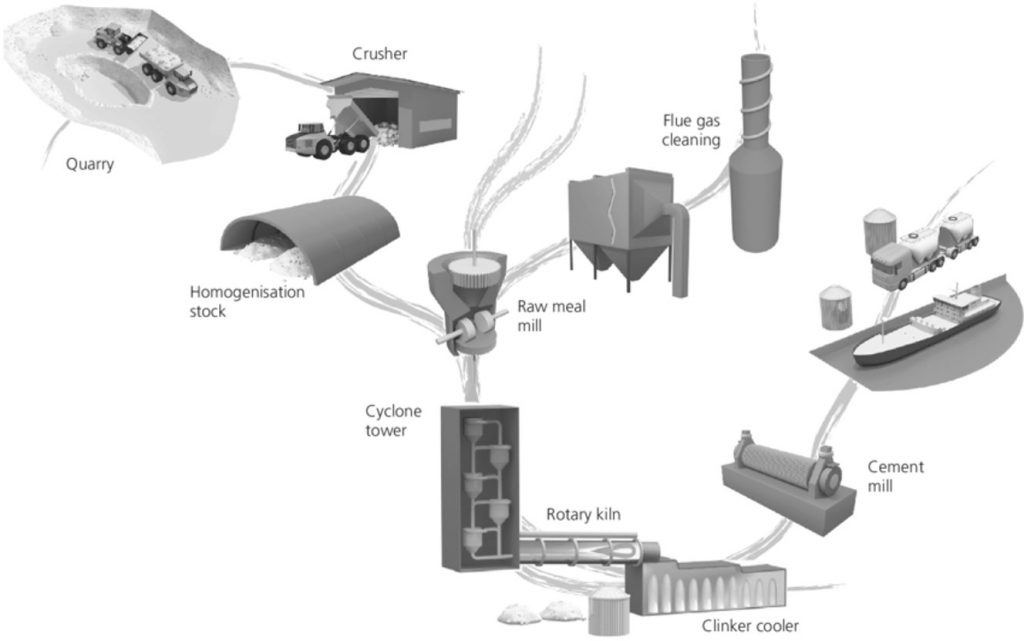
Figure 2. Overview of factory components at Sunchon Cement Factory.
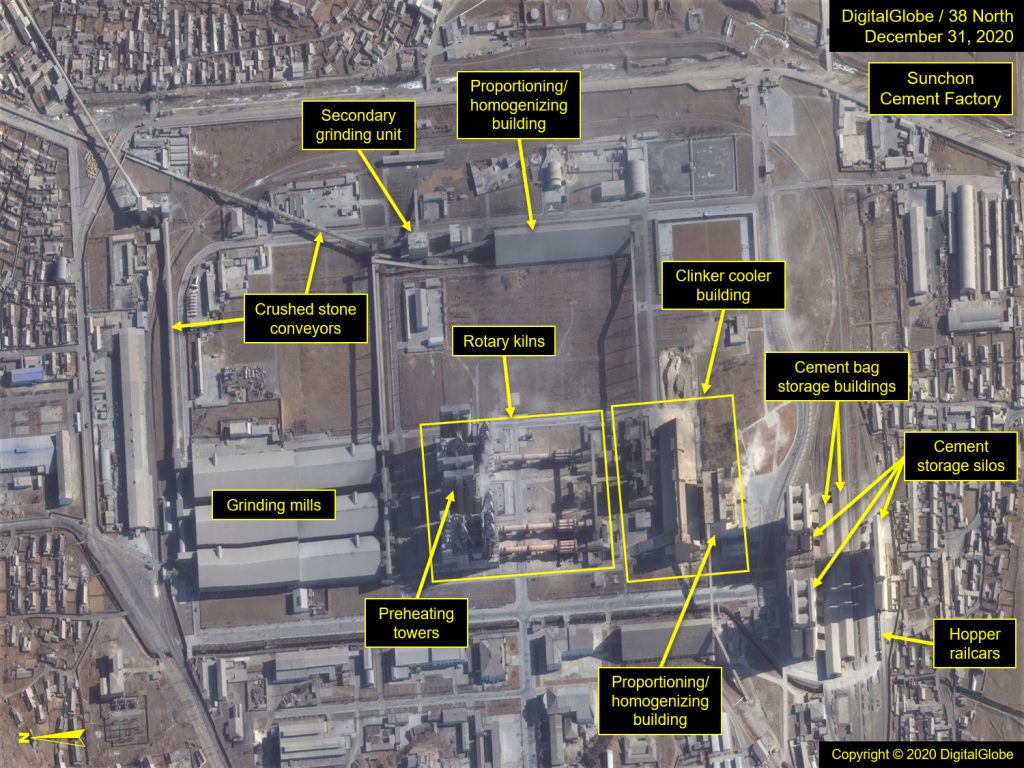
Factory output itself is, unfortunately, difficult to determine. As mentioned earlier, North Korean cement factories tend to be located near limestone mines or quarries. Of those limestone deposits, all appeared to be active, but mines reveal little with regard to output, as rock is not stored in piles outside the mines, such as the case with coal and other ores.
Quarries, on the other hand, provide subtle signatures of activity. Surface blasting is common, but the changes in topography following such blasts are rarely significant. Instead, the presence of power shovels and dump trucks are key indicators of ongoing activity.
At the mines, rock is most often removed and transported to the factories via covered conveyors, thus precluding the ability to determine the amount of rock being moved. Even at open quarries, because of their proximity to the cement factories, covered conveyors are in use.
Once reaching the factories, the rock is moved directly into crushing buildings and not held in open storage bins. With little stock generally observable within factory complexes, there are few means to measure activity levels.
Liquid tank cars and gondola (ore) cars are typically observed at factory rail yards, but their numbers can fluctuate significantly between images. Without frequent imagery, it is nearly impossible to determine production surges and then tying them to official news releases that boast increases in output. The same applies to the limestone quarries where, despite official media reports of large blasting efforts, the coinciding commercial imagery revealed little such evidence.
Kim Jong Un’s report to the Eighth Party Congress also addressed the introduction of new processes at cement factories designed to produce a better quality and/or greater volume of product. In most cases, this change of production equipment occurs inside of existing buildings, and so unless a building is razed or another is added, such improvements cannot be verified through satellite imagery. Nonetheless, certain assessments regarding the health and size of the industry can be made, and these will be addressed by factory.
The Landscape of North Korea’s Cement Factories
As one might expect, the largest of the cement factories are located near the larger population centers, where they can often be found in clusters. The southwest sector of North Korea is home to the most populated provinces and thus has the greatest demand for building materials. Included in this region are the Pyongyang and Nampo metropolitan areas.
Pyongyang
Using Pyongyang as a central reference point, cement factories are arrayed around it with the majority located to the northeast, east, and southeast.
Beginning 45 kilometers (km) to the northeast of Pyongyang is a cluster of three factories located just to the east of the city of Sunchon. These are the Pusan-ri, Puhung, and Sunchon factories. These appear to be “showcase” factories as they have ample housing and other amenities nearby. The mines and quarries which provide the raw materials for making cement are located nearby, the largest being the Jikdong Gypsum Mines.[4]
Figure 3. Overview of the Sunchon Area Cement Factories.
Note: Hover over slideshow and click on left/right arrows to navigate.
Of these three factories, Pusan-ri has undergone the most physical change in the past decade, where imagery shows the disassembly of its northern processing line began in 2011. Construction of new buildings, which appear to serve a probable administration or laboratory function, began in 2016 and was completed within a year.
To the east of Pyongyang, three large cement plants can be found in areas between 18 and 27 km from the city. These include the Sungho-ri, Mandal, and Kumok cement factories. And going to the west of the city 15 km is the Kang-so Cement Factory.
One of the largest cement factory complexes, the Sangwon Cement Factory Complex, is located 27 km to the southeast of Pyongyang and boasts a city-like layout. It includes a hospital, the Undok Health Complex, workers’ dormitories, a tree nursery, a refractory cement factory, ordnance storage facilities, and a limestone refinery. A 2019 Pyongyang Times article highlighted the facility’s efforts to modernize equipment and “supply more cement to major construction sites including Samjiyon County, Wonsan-Kalma coastal tourist area, Tanchon Hydroelectric Power Station,” quoting its deputy chief engineer.[5] Here, the only notable change within the Sangwon complex in the past decade has been the addition of seven high-rise housing units along the south side of the refractory cement factory.
In the Sariwon area, located 60 km to the south, are the Kyongamsan Cement Factory, Madong Factory No. 1, and the Sariwon Concrete Railway Tie Factory. Of these, the Kyongamsan factory has seen the most visible change to its layout, mainly within the Cement Production Process area. In early 2011, many of the older, smaller buildings were razed, and new construction began in phases, all of which were completed by October 2013 and added significant capacity to the processing plant.
Figure 4. Overview of the Sariwon Area Cement Factories.
Note: Hover over slideshow and click on left/right arrows to navigate.
Finally, another 30 km to the south is the Sinwon Cement factory. It is relatively unremarkable in size, but its location adjacent to a limestone quarry suggests it may have replaced the older Haeju Cement Factory, which is no longer in service. The Haeju Cement Factory is located at the seaside city of Haeju, 115 km south of Pyongyang. There, the factory was thriving until around 2004, but began to decline thereafter, and now appears to be abandoned. Its location by the sea is notable because it provided easy water access for shipping, although tide patterns likely impacted the size of the vessels able to use the port. While probably a location for shipping, there are no nearby limestone quarries, which also likely contributed to its demise in favor of Sinwon.
Wonsan
On the east coast, Wonsan represents the largest metropolitan area. It is an area that has seen a tremendous amount of growth in the last decade, particularly due to the promotion of tourism to the region, and specifically, the creation of the Wonsan Special Tourism Zone. Announced in 2014, the 400-square km tourist zone encompassed approximately “140 historical relics, 10 sand beaches, 680 tourist attractions, 4 mineral springs” with the goal of attracting much-needed foreign currency.[6]
Supporting the region is a cluster of four cement factories, Puraesan, the Chonnae-ri complex, Ryongdam, and the 618 Factory, all approximately 30 km northwest of Wonsan. The 618 Factory is the newest in the region, having been constructed between 2013 and 2014, a timeframe which coincided with the announcement of the Wonsan Special Tourism Zone.
Figure 5. Overview of the Chonnae-ri Area Cement Factories.
Note: Hover over slideshow and click on left/right arrows to navigate.
The northern part of the country is mountainous and less populated, and accordingly, the rest of the larger cement factories are in more isolated locations. The Manpho Cement Factory appears to be the largest from a capacity perspective. As its name suggests, it is located in the city of Manpho on the Yalu River. Its riverside access allows it to serve a larger area along the country’s northern border, providing cement for the construction of buildings and the numerous hydroelectric dams that have been built both on the Yalu River and within the nearby river valleys.
Figure 6. Overview of the Manpho Cement Factory.
Note: Hover over slideshow and click on left/right arrows to navigate.
Unlike most of the country’s cement factories, the limestone mine which provides crushed rock to this plant is located 3 km upstream, and the rock is transported by rail to the factory. Another unusual feature of this factory is that there is open storage on site for the crushed rock before it is moved into the grinding buildings.
Two other cement factories are located farther inland within a 70-km radius of Manpho. These are the Kanggye and Kophung factories. They are smaller in size and are likely major contributors to the construction of the many dams in the region.
The Hyesan Cement Factory, located on the west side of Hyesan, is also on the Yalu River, approximately 160 km to the east of Manpho. While it supports the local metropolitan area and nearby projects, its location suggests that it is likely contributing significantly to the construction projects in the development of the resort city of Samjiyon.
Finally, there are two cement factories north of Wonsan. The first, approximately 86 km away, is the Hamhung Cement Factory, a smaller plant that serves the local communities, including Sinpho. A cement storage facility, likely supplied by Hamhung, is located 75 km to the northeast on the sea, enabling the movement of cement up and down the coast. The last factory, the Kumusan Factory and adjacent limestone mine, is located 307 km north. Kumusan serves the northeastern most portion of the country, including the cities of Rason and Undok.
Figure 7. On the ground images of Sangwon, Sunchon and Sinwon cement factories.
Note: Hover over slideshow and click on left/right arrows to navigate.
Conclusion
The tasked modernization and expansion of North Korea’s cement industry underpins the success of several of Kim Jong Un’s economic goals. While some growth and improvements over the past decade can be documented, signs of new construction or renovation of existing cement factories have yet to be observed.
Since the Eighth Party Congress, North Korean state media has run several reports of factories exceeding their production goals and on the successful blasting of many tons of limestone rock.[7] This suggests the industry is heeding Kim’s direction in the short term, perhaps trying to demonstrate that it can rise to meet immediate demands, while it prepares for greater changes to come.[8] Most recently, construction efforts have focused on major residential housing projects in Pyongyang.[9]
However, to date, none of these successes can be substantiated with imagery. Instead, the improvements observed are many years old, with the 618 Factory, completed in 2014, being the newest factory to be added and other modernization projects completed prior to 2017.
Looking Ahead
Cement is critical in achieving the construction goals set forth in North Korea’s new five-year economic plan, as well as to keep up with everyday demands such as post-flood repairs or general repairs to dams and bridges. While increases in the cement industry’s output are difficult to measure with satellite imagery, construction of new factories and/or renovation of older factories are likely in the mid-term future to achieve the plan’s production targets. However, whether this will improve the quality of cement produced or just increase the volume remains to be seen.
Things To Watch
- Will North Korea begin to expand or build new cement factories around areas where new, large-scale projects are being introduced to meet growing demand?
- Will changes be made to factory layouts and designs that would suggest the addition of new or modernized production lines?
- Will additional roads or rail lines be added around existing cement factories that would indicate greater output or new distribution routes?
- Will new cement factories be constructed around flood-impacted areas to meet housing demands as well as building of dams and levees to better control future flooding?
The Stimson Center and the National Geospatial-Intelligence Agency partnership uses unclassified imagery and data to produce new, timely, and accurate reporting on the North Korean economy. For more info, read the Tearline Project Explainer.
To read more, visit NGA’s Tearline article or download the Tearline app from the Apple Store or Google Play.
This content also syndicates to the Office of the Director of National Intelligence’s website intelligence.gov, which is a transparency effort to better explain certain strategic and humanitarian IC missions to the public.
- [1]
“On Report Made by Supreme Leader Kim Jong Un at Eighth Congress of WPK,” Korean Central News Agency, January 9, 2021.
- [2]
Ibid.
- [3]
“First-quarterly Plans Fulfilled in Many Sectors of National Economy,” Rodong Sinmun, April 3, 2021.
- [4]
Gypsum plays an important role in controlling the rate of hardening in cement.
- [5]
Yun Kyong Il, “Consolidating foundation for increased production,” Pyongyang Times, September 19, 2019, http://www.pyongyangtimes.com.kp/?bbs=31424.
- [6]
Wonsan Zone Development Corporation, “Introduction to Investment Projects in Wonsan-Mt. Kumgang International Tourist Zone (2015),” https://www.38northref.org/wp-content/uploads/2020/04/Wonsan-Kumgang.pdf.
- [7]
Recent state media coverage include: “Blasting of 250 000 Cubic Metres of Earth Successful at Sunchon Limestone Mine,” Korean Central News Agency, April 21, 2021; “Blasting of 260 000 Cubic Metre Earth Successful at Sunchon Limestone Mine,” Rodong Sinmun, March 12, 2021; “100,000 cubic metres of earth blown up,” Voice of Korea, February 22, 2021; and “Blasting of 50 000 Cubic Metre Earth Successfully Carried out by Kyongam Cement Factory,” Rodong Sinmun, January 25, 2021.
- [8]
Recent state media coverage include: “In Order to Send More Cement to Dwelling Construction Site in Pyongyang,” Rodong Sinmun, March 31, 2021; “Resolved to Produce More Cement,” Rodong Sinmun, March 24, 2021; “Resolved to Produce More Cement,” Rodong Sinmun, March 11, 2021; and “Cement Produced in Large Amount,” Rodong Sinmun, January 13, 2021.
- [9]
See: “Mammoth housing project to demonstrate might of DPRK again,” Pyongyang Times, April 19, 2021; and “Cement complex boosts output for 10 000-flat project in Pyongyang,” Pyongyang Times, April 2, 2021.

